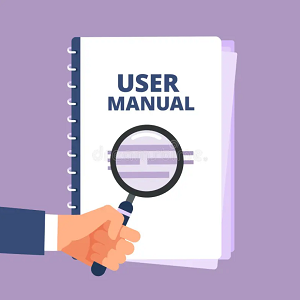SOP Builder vs. Manual Documentation: Which One is Right for You?

Standard Operating Procedures (SOPs) are essential for maintaining consistency, improving productivity, and ensuring compliance across teams. But the method you use to create and manage these SOPs can significantly impact how effective they are. Should you stick to manual documentation, or is it time to invest in a modern SOP builder? Let’s explore both approaches to help you make the right decision.
Manual Documentation: Simple but Time-Intensive
Manual documentation typically involves using tools like Microsoft Word, Excel, or Google Docs to create SOPs. It’s the go-to method for many businesses starting out.
Advantages:
-
No additional tools required: If you're already using office software, there’s no need to invest in anything new.
-
Full creative control: You have complete freedom to structure your documents as needed.
-
Low cost: Aside from employee time, there are no upfront expenses.
Disadvantages:
-
Lack of structure: Without standardized templates, documents can vary widely in format and clarity.
-
Tedious updates: Editing and updating SOPs manually can be a repetitive and slow process.
-
Poor version control: It’s easy to lose track of which version is the most current when files are shared across teams.
-
Limited engagement: Manually created SOPs often lack visuals and interactive elements that help users understand steps clearly.
SOP Builder: Modernizing Process Documentation
SOP documentation software are purpose-built tools designed to streamline the creation, management, and sharing of SOPs. They often include features like automatic step capture, drag-and-drop editors, rich media support, and team collaboration options.
Advantages:
-
Faster creation: Many SOP builders allow you to record tasks in real-time, automatically generating guides.
-
Consistency: Templates and formatting tools ensure a professional and uniform appearance across all documents.
-
Easy updates: Edits can be made instantly, and the latest version is always available to the team.
-
Interactive content: Add screenshots, screen recordings, and step-by-step instructions without external tools.
-
Team collaboration: Team members can work together on SOPs and provide real-time feedback.
Disadvantages:
-
Initial learning curve: Some platforms require time to understand and adopt.
-
Ongoing subscription cost: Most SOP builders come with monthly or annual pricing.
-
Tool dependence: Shifting to another platform later may involve data migration challenges.
Final Thoughts: Choosing the Right Fit
If your organization deals with a small number of SOPs and rarely updates them, manual documentation might be a reasonable choice. However, for growing teams that require speed, accuracy, and collaboration, an SOP builder offers significant advantages.
By automating repetitive tasks and improving the clarity and accessibility of your documentation, SOP builders help reduce errors, accelerate onboarding, and support better process management.
Conclusion
Manual documentation might be suitable for basic needs, but for businesses focused on growth, scalability, and operational efficiency, an AI tool for guide creation is the smarter, future-ready choice. Assess your team’s workflows, documentation volume, and collaboration needs to make an informed decision.
- Art
- Causes
- Crafts
- Dance
- Drinks
- Film
- Fitness
- Food
- Games
- Gardening
- Health
- Home
- Literature
- Music
- Networking
- Other
- Party
- Religion
- Shopping
- Sports
- Theater
- Wellness
